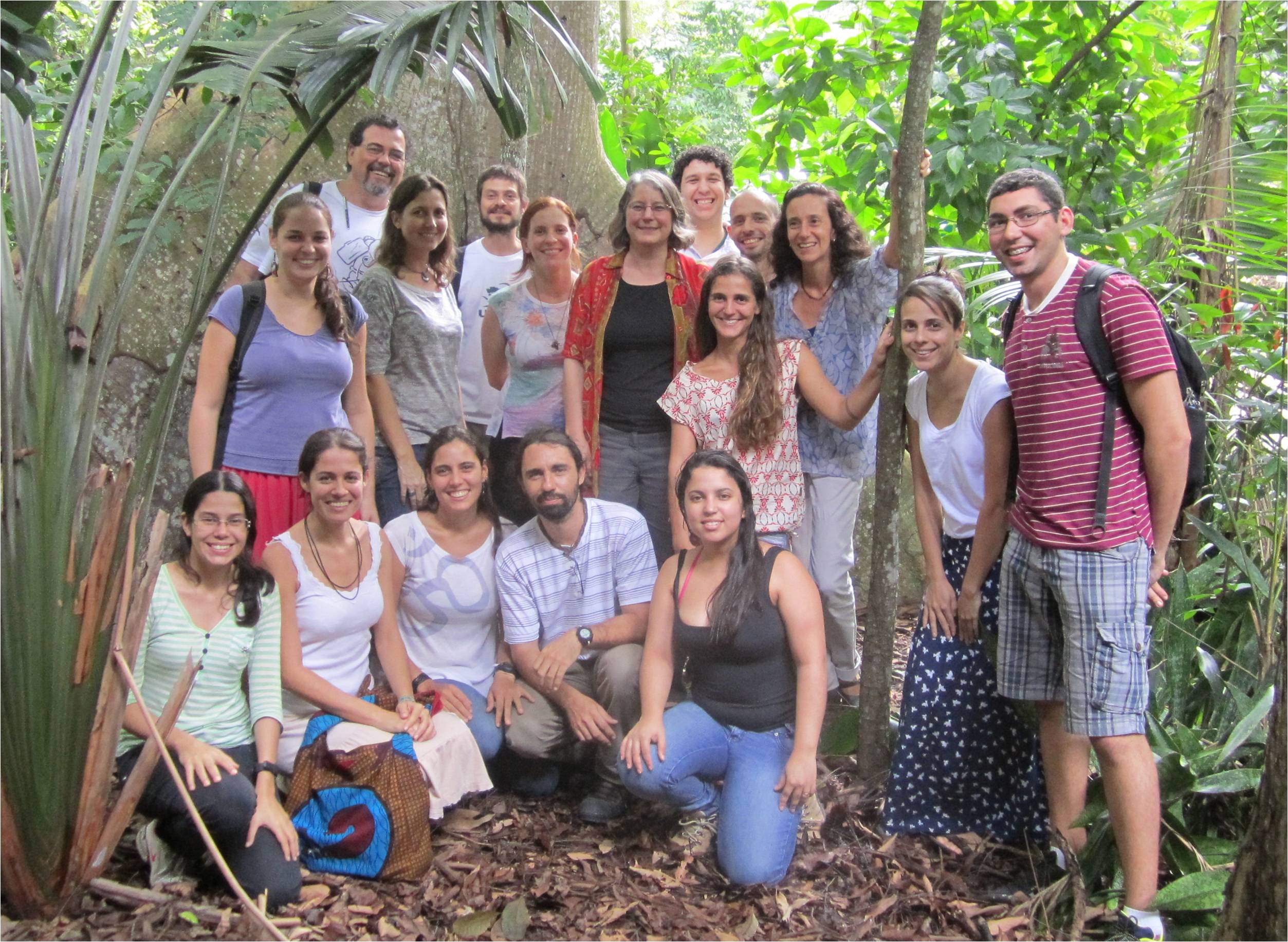 Português
Português English
English
Languages
PPBio/CENBAM e Projeto Ciência sem Fronteiras/CNPq promovem visita da Dra. Marie-Josée Fortin ao INPA
O PPBio e o CENBAM promoveram a visita da Dra. Marie-Josée Fortin, professora da Universidade de Toronto/Canadá e pesquisadora visitante pelo programa Ciência sem Fronteiras/CNPq, ao INPA, entre os dias 20 de janeiro e 19 de fevereiro de 2013.

Durante o período da visita, a pesquisadora ministrou uma disciplina, proferiu palestras e conversou com alunos de mestrado e doutorado, auxiliando-os nas análises e interpretação dos principais resultados encontrados em seus projetos de pesquisa. Visitou os sítios de pesquisas do PPBio na Reserva Florestal Adolpho Ducke, BR 319, Arquipélago de Anavilhanas, São Gabriel da Cachoeira e Santarém.
O intercâmbio foi financiado pelo projeto intitulado: “Análises espaciais na avaliação de estrutura de comunidades e a seleção de unidades de conservação”, do programa Ciência sem Fronteiras/CNPq, associado ao PPBio e ao CENBAM.
Tanto as palestras como a disciplina foram ministradas em inglês e os seus vídeos estão disponíveis para download abaixo.
Palestra 1: “Landscape and genetic connectivity based on graph theory”
Abstract
In conservation studies there is a lot of interest in maintaining landscape connectivity such that individuals can move through fragmented landscapes. Over the last decade, different graph-theoretical methods have been proposed to determine potential corridors and reserve networks. The question is however which of these networks is the most appropriate. We need therefore to be having a framework to compare different types of networks based either on the nodes, the links or the network as a whole. Here I will present the most common network methods to compare graphs. I illustrate how these network measures can be used to determine (1) the spatial connectivity of ponds, (2) the spatio-temporal connectivity of malaria, and (3) the genetic connectivity of frogs.
Ministrada no INPA, no dia 31/01/2013, link para download.
Essa mesma palestra foi ministrada em Santarém, com tradução simultânea, link para download.
Comentários da palestra com tradução simultânea, link para download.
Palestra 2: “Species range expansions”
Abstract
Species ranges are dynamic due to disturbances and global environmental changes. Although climate change is expected to lead to range expansions at high latitude range margins, habitat fragmentation might influence colonization success and ultimately species persistence. Secifically it is important to determine the relative influence of abiotic and biotic on bird species expansion. To determine the relative effects of climate, forest availability, connectivity,and biotic processes such as immigration and establishment, we model the range expansion of Hooded Warbler (Wilsonia citrina): biotic process variables masked the effects of forest availability and connectivity on range expansion; also expansion due to climate change is slowed by forest fragmentation. Furthermore the rate of range expansion is influenced by the proximity to neighbouring populations. These findings highlight that species range expansion do not depend only on climate change.
Ministrada no INPA, no dia 14/02/2013, link para download.
Disciplina: Estatística Espacial
Ministrada no INPA, de 04 a 07 de fevereiro de 2013.
Tópicos abordados na disciplina
Space and scales
Randomization tests
Spatial neighborhoods
Spatial analysis of point data
Join count statistics
Spatial analysis of contiguous quadrats
Spatial autocorrelation for sample data (global & local statistics)
Spatial interpolation
Mantel tests
Modified t-test correction for spatially autocorrelated data
Multiscale analysis
Spatial regressions
Graph Theory
Boundary detection
Links das aulas em ordem cronológica:
Aula 1 : 04/02/2013
Aula 2 : 05/02/2013
Aula 3 : 06/02/2013
Aula 4 : 07/02/2013
